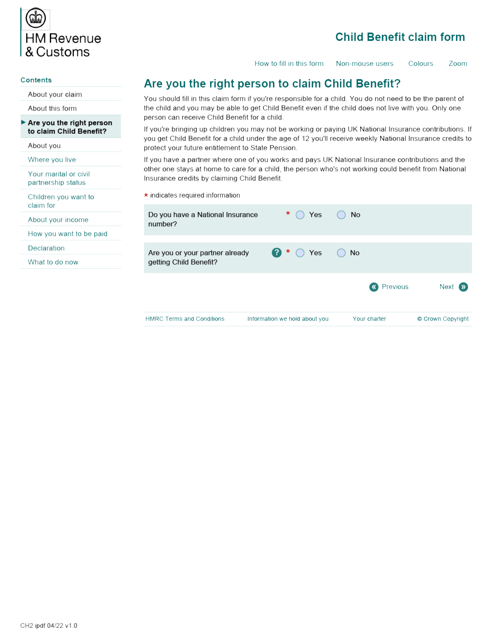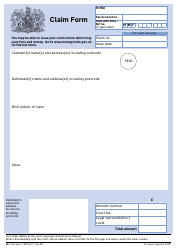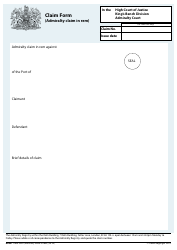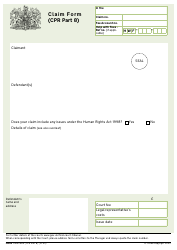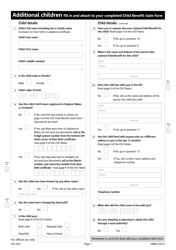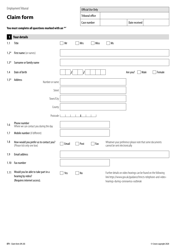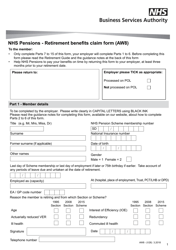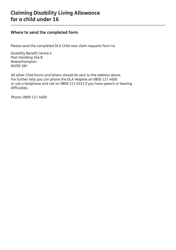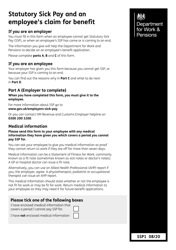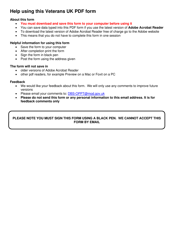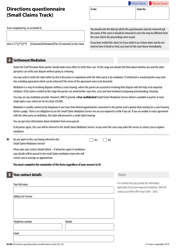Form CH2 Child Benefit Claim Form - United Kingdom
What Is Form CH2?
Form CH2, Claim Child Benefit , is a formal statement prepared by the parent or future adoptive parent of a child to request child benefits. If you reside in the United Kingdom, you can complete the claim for every new child born in the United Kingdom. Note that you can use this application only if you wish to claim the benefit for one or two children you are responsible for and if the children are younger than 16 or 20 if they receive an education. The document contains guidelines for parents who need to manage their income and possible tax charge and to secure their state pension.
Alternate Names:
- Child Benefit Form;
- Child Benefit Claim Form;
- Child Benefit Application Form.
The latest version of Form CH2 was released by United Kingdom HM Revenue & Customs on April 1, 2022 , with all previous editions obsolete. A fillable Form CH2 can be downloaded through the link below.
How to Fill In a Child Benefit Form?
- If you have a National Insurance Number, write it down. Indicate your title, full name, names you have used in the past, address, telephone numbers, and nationality.
- If you have claimed this benefit before or are currently entitled to it, tick the appropriate boxes. Add information about the eldest child you are entitled to receive the benefit for.
- Share your personal history by answering several questions - how long you have lived in the United Kingdom, have you been subject to immigration control, what is your employment status at the moment, have you worked or received benefits in another country. Tick the box to confirm you are a member of HM forces or a civil servant who works abroad. Specify your marital status and the date you started living with your spouse or partner or separated from them.
- List the personal details of your partner - their name, date of birth, National Insurance number, nationality, employment status. If they are qualified to receive the benefit for their children, name this eldest child eligible for it.
- State how many children you are filing a claim for and record the number of original documents you are attaching to the form.
- Provide information about each child you would like to claim for - their name, gender, date of birth, the country where the birth was registered, other names they have used. Indicate whether it is your birth child, stepchild, or adopted child. If anyone else claimed the benefit on behalf of the child, name the applicant. Enter the child's place of residence and the date they came to live with you. In case you are in the process of adopting this child, answer "yes."
- If you or your partner have an income of £50,000 a year or more, you can choose between protecting your state pension or obtaining child benefits. In the latter case, your or your partner's income tax may receive an additional charge.
- Confirm your wish to receive the benefit every four weeks or every week and certify you are a single parent or you receive income support or allowance to qualify for weekly payments.
- Record your bank account details - the child benefit will be deposited into an account you describe.
- Read the list of the documents to figure out which must be enclosed to the application. Tick the box to demonstrate the information in the form is true and complete, sign and date the form.
Where to Send a Child Benefit Form?
Once the document is ready, send an envelope with all the supporting files to the Child Benefit Office, Washington, Newcastle Upon Tyne, NE88 1ZD. You must attach an address label to ensure your claim is processed quicker. An online Child Benefit Form is available if you prefer to prepare it this way - complete the electronic document, print it out, and submit it to United Kingdom HM Revenue & Customs.
